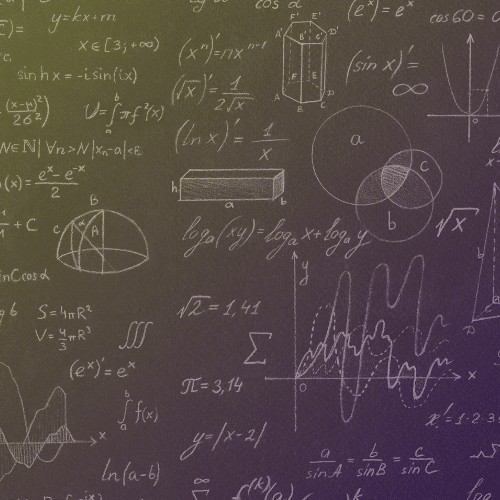Fact: one of the most tested categories of concepts on the GMAT Quantitative section is Integer Properties
What are the “properties of integers”?
Probably none of these are brand new to you —- in fact, you probably learned about all these in grade school. Here’s a list.
a) factors and multiples; GCF and LCM
b) quotient and remainder
c) even & odd
d) prime numbers
e) consecutive numbers and other consecutive sets (odds, evens, multiple of 5, etc.)
f) special properties of 1 (e.g. 1*(any number) = that number)
g) special properties of 0 (e.g. (any number) + 0 = that number, (any number)*0 = 0)
Again, nothing here is anything that is not covered in grade school, but the trick is: you have to have this all at your fingertips when you take the GMAT. These interrelated concepts lend themselves effortlessly to a myriad of PS & DS questions, and you need to handle them deftly with precision. See this post https://magoosh.com/gmat/math/arithmetic/gmat-math-factors/ for tips about factors, multiples, GCF, and LCM. For more tips, see below.
What are integers?
Integers are positive and negative whole numbers. They are the set:
{ . . . -3, -2, -1, 0, 1, 2, 3, . . .}
They go on forever in the positive and negative direction. They do not include fractions, decimals, and numbers like pi. One way for non-mathy folks to remember the integers: the word “integer” shares a root with the word “integrity” — both come from the Latin word for “whole, wholeness.” If I have integrity, there is a wholeness among my intention, my speech, and my actions; people who lack integrity say one thing and do another.
Big GMAT idea: if the GMAT makes a numerical statement (e.g. x < 3), do not assume x is an integer unless that is specified. That’s one of the biggest DS traps, assuming the only possibilities are integers when there are many more possibilities allowed. Here’s a trippy advanced math idea: the infinity of non-integers is infinitely bigger than the infinity of integers. (Read http://en.wikipedia.org/wiki/Infinity if you are up for an adventure learning about infinity — well beyond what you need to know for the GMAT).
Even and Odd
First of all, here are three addition rules:
1) (even) + (even) = (even)
2) (odd) + (odd) = (even)
3) (even) + (odd) = (odd)
Those also work if the addition sign is changed to a subtraction sign.
Now, three multiplication rules
1) (even)*(even) = (even)
2) (odd)*(odd) = (odd)
3) (even)*(odd) = (even)
(These rules are not the same if the multiplication sign is changed to division!) If you have trouble remembering these six rules, you can always use even = 2 and odd = 3 to remind yourself. (Yes, 1 is also odd, but I recommend not using that as a test number only because it has so many special properties.)
Keep in mind: zero is an even number. Keep in mind, also: negative numbers can be even and odd, just like their positive compatriots. Fractions and non-integers cannot be even or odd: it’s exclusively an integer property.
Prime
Every number has 1 as a factor. Every number has itself as a factor. A number is prime if it has only those two factors, i.e., no factors other than 1 and itself. Only positive integers are said to be prime; we do not apply the distinction “prime” or “not prime” to negative integers, zero, or to non-integers.
Here is a list of the first few primes:
2, 3, 5, 7, 11, 13, 17, 19, 23, 29, . . .
The primes go on forever in an irregular pattern, the nature of which involves the hardest unanswered question in math today, the Riemann Hypothesis — again, well beyond what you need to know for the GMAT. It would be good to memorize that list of the first ten prime numbers: that will help you a lot on the GMAT. Notice that, for a variety of reasons with which we need not concern ourselves here, 1 is not a prime number. Notice, also: 2 is the only even prime number: all other even numbers are divisible by 2. That’s a very handy distinction, especially in GMAT DS: 2 is the only even prime number.
See the factors post for more information about prime numbers.
Know Them Cold
Probably there’s nothing brand new in this post. Probably you have at least a dim memory, if not a perfectly clear understanding, of everything here. Whatever here is rusty, whatever is less than perfectly fluent, you need to practice until you know it cold. The GMAT is relentless in asking about these properties, and if you can nail them every time, you will be well on your way to a stunningly successful GMAT Quantitative section.
Here are a couple of practice questions:
1) http://gmat.magoosh.com/questions/880
2) http://gmat.magoosh.com/questions/317
Special Note:
To find out where integer properties sit in the “big picture” of GMAT Quant, and what other Quant concepts you should study, check out our post entitled:
What Kind of Math is on the GMAT? Breakdown of Quant Concepts by Frequency






Leave a Reply